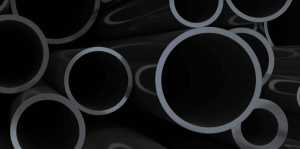Most people may have interacted with stainless steel at some point in their life. However, not everyone knows what it is, how it is made, and its uses. Here we explain everything you need to know about stainless steel.
Almost everyone has heard or used stainless steel at some point in their life. However, not everyone understands what it is, how it is constructed, nor how it is used, and the advantages of using a stainless steel tube over a tube that is made from other materials. Steel can be combined with a wide range of elements like Chromium and Molybdenum to get 4130 tubing.
There are unique advantages of using stainless steel in different applications or projects. Unfortunately, most contractors or designers will refrain from using the best stainless steel tubes due to associated costs, among other factors. Still, if you are searching for a different kind of material that will lead to a longer life expectancy of your project, then you need to get 4130 tubing.
Table of Contents
What Exactly is Stainless Steel?
As the name suggests, stainless steel is the type of steel that is able to resist corrosion and other types of stains. The unique ability comes from extra chromium and the low composition of carbon. Furthermore, the metal has self-healing abilities, especially when exposed to oxygen due to the addition of chromium.
When the metal gets into contact with oxygen, instead of rusting, a little invisible layer of chromium oxide will form on the outer parts of the metal to prevent it from being damaged. It is the same self-healing ability that will keep it safe if it is exposed to chemical or mechanical damage. Stainless steel can also be fortified with other elements such as nickel, molybdenum, and nitrogen during the manufacturing process to make it stronger and highly durable.
Types of Stainless Steel
There are more than 60 grades of stainless steel available in the market. However, all of them are broadly classified into five main categories. The categories are classified according to different elements that make up the alloy. The reason behind the addition of different elements is to increase the strength of the steel to make it more durable under harsh conditions.
Low alloy grades are highly resistant to corrosion in pure water, while those of higher alloys are highly resistant to corrosion in acidic areas. On the other hand, stainless steel with a high composition of chromium and nickel are highly resistant to scaling. Carbon is also an important element that can fortify steel to come with a final product with enhanced strength and hardness.
What Is Annealing?
A stainless steel pipe is one of the metals that can be annealed. The reason for this may be to alter the chemical and mechanical properties.
The term annealing refers to the heat procedure that can be used to upsurge the ductility or lessen the hardness of a material. Annealing process reduces dislocations in the structure of the crystal of the metal being annealed, this, in turn, results in an increase in ductility and a reduction in the hardness of the material.
This process is usually undertaken after the material has been hardened or after a cold working process. The process helps to prevent the metal from brittle failure and make it more useful for its intended purpose.
Reasons for Annealing a Metal
The reasons for annealing a metal is to increase ductility and reduce its hardness. Another reason for carrying out this process may be to help in improving the formability of the metal; this is because brittle and hard materials can be tough to bend. Bending such materials might cause a metal fracture. Annealing the metal will help reduce such an instance of metal fracture.
The process can also help in improving machinability. A brittle and hard metal can cause unnecessary machine wear. Annealing can help reduce the hardness of the material and further reduce machine wear.
Annealing also helps in reducing residual stresses, which might lead to cracks and other complications of the material. Annealing helps eliminate such like instances.
Commercial Application
Stainless steel has a wide range of commercial applications. Their extensive use is because of their excellent characteristics, such as low crossing resistance, malleability, and ductility. This ensures that the steel can be transformed into many forms, such as plates, wire, and tubing.
It is also used in manufacturing hospital supplies such as surgical blades,
Advantages of Using Stainless Steel Over Other Materials:
- Stainless steel has chromium which reacts with oxygen to create a layer of chromium oxide. This layer makes stainless steel resistant to both stains and corrosion
- It has an incredible strength to weight ratio than other materials
- It is conducive to the environment, considering that it can be recycled indefinitely
- Another great advantage of using stainless steel is that you have unlimited options when it comes to application and different uses. The only thing that is going to limit your options is your creativity
